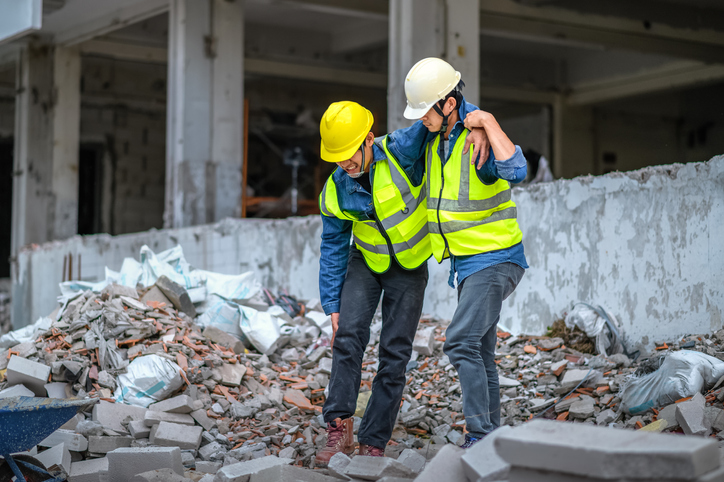Construction work is one of the most inherently hazardous types of occupations in the country. In fact, in 2024, Nearly 1 in 5 of all workplace fatalities occur in the construction industry.
Walking on uneven surfaces, using heavy equipment, and working several stories in the air all contribute to a dangerous working environment. Despite the rigorous standards required for construction site safety, there are still many ways workers can get hurt in a construction accident.
The U.S. Occupational Health and Safety Administration (OSHA) has named the most common causes of fatal or catastrophic accidents the “fatal four.” Those, plus slipping or tripping and falling, account for most serious construction site accidents.
1. Falling from Heights
Scaffolding, ladders, rooftops, or open floors above the ground can be dangerous places to work. Proper safety gear, including a net and harness, can help prevent serious injuries if workers fall. More than half of all fatal injuries sustained by construction workers are caused by falling from heights.
The kind of injury and the degree of severity often depends on how far the worker falls and how they land. Unfortunately, many construction workers sustain multiple injuries from a fall, meaning a long, painful recovery time. Common injuries sustained after falling from a height include:
- Traumatic brain injury (TBI), concussion, or a skull fracture
- Broken bones and fractures
- Nerve damage or semi or full paralysis
- Internal bleeding and organ damage
- Neck, back, and spine injuries
The complications from these injuries can be serious, with many people requiring surgery or physical therapy to recover. Some victims may have their physical abilities permanently compromised.
2. Electrocution
Only a licensed electrician should attempt any kind of electrical installation or repair. Proper safety protocols, such as consistent lock-out/tag-out procedures, can reduce the chances of someone getting electrocuted.
Many accidents happen when workers don’t realize there is an energized power source nearby or that certain power lines are “hot.” Check any electrical cords for signs of fraying or other damage, and do not use them if the cord is damaged.
Always assume that any type of power source is hot. When using electrical equipment, always double-check if it’s plugged in.
3. Struck-By Injuries
People aren’t the only thing that can fall from heights in a construction zone. Falling objects pose a great danger to workers and site visitors, especially those not wearing a hard hat.
Paint cans, tools, equipment, or construction debris can strike you in the head, resulting in a concussion or brain injury. Proper safety training and better use of safety nets or other gear can reduce the instances of people being struck by falling objects.
4. Caught-Between Accidents
Being caught between two pieces of heavy equipment, or between the equipment and another immovable object, like a wall or floor, can be terrifying. Crushing injuries and shattered limbs are common injuries if a construction worker is caught between two items.
A caught-between injury isn’t always fatal, sometimes resulting in a pinched hand or finger, but the results can be debilitating, especially if the digit or appendage must be amputated.
5. Slip, Trip, and Fall Accidents
Uneven or slick surfaces are common in construction zones. It’s easy for someone to trip over a hole or misplaced tool or slip on a slick or wet surface. A bad landing could result in both wrists being sprained or broken, a fractured tailbone, a concussion, or broken limbs.
Good footwear can reduce the chances of a slip and fall accident, as can proper cleanliness and safety procedures.
What to Do if You’ve Been Involved in a Construction Accident
After a construction accident, you may have grounds to file a claim for damages in addition to whatever worker’s compensation benefits you have.
If the site manager didn’t fulfill their duty of care to protect workers and site visitors, a personal injury law firm, like Saeedian Law Group in Los Angeles, CA, can help you file a suit for your injuries. Call our team today.
